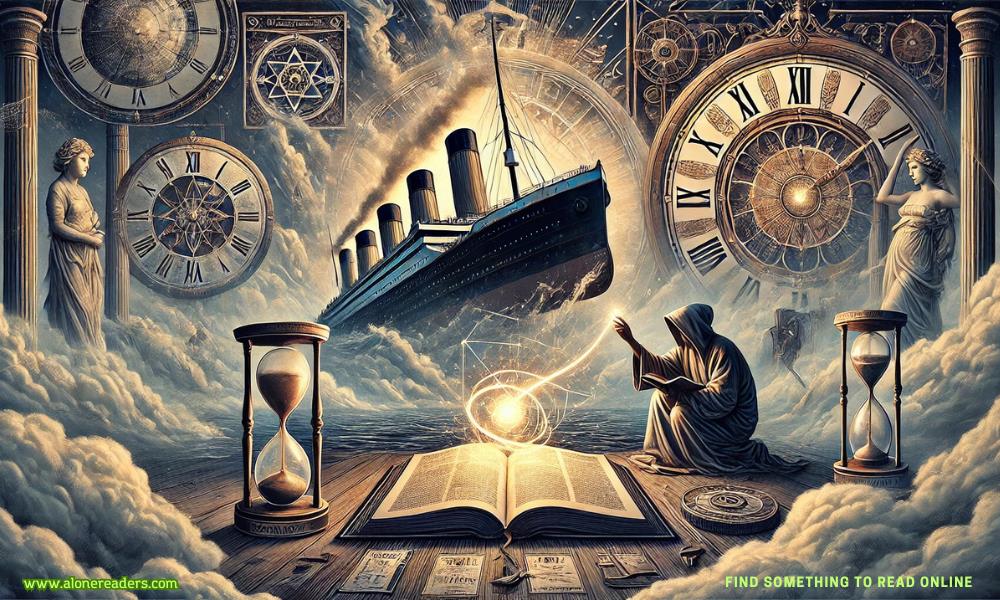
History is filled with events that boggle the mind, but some moments go beyond the realm of the ordinary and enter a domain so strange they seem like something out of fiction. These incredible coincidences, spanning different eras and regions, are more than mere anecdotes—they highlight the inexplicable nature of life itself. From near-impossible encounters to eerily predictive events, here are some of the most fascinating historical coincidences that will leave you awestruck.
One of the most famous historical coincidences involves the RMS Titanic and a fictional story written years before its tragic sinking. In 1898, author Morgan Robertson published Futility, a novel about a massive ocean liner called the "Titan." This fictional ship, like the Titanic, was described as "unsinkable," carried insufficient lifeboats, and met its demise after hitting an iceberg. Fourteen years later, the real-life Titanic experienced the same fate in chillingly similar circumstances. The parallels between the fictional tale and the historical tragedy are so precise that they have sparked endless debate about the power of foresight.
The eerie similarities between the lives and deaths of U.S. Presidents Abraham Lincoln and John F. Kennedy have long fascinated history enthusiasts. Here are just a few of the coincidences:
While these facts might seem like a page out of a conspiracy theory, they are entirely real, leaving historians and casual readers baffled.
In 1941, Soviet archaeologists unearthed the tomb of Tamerlane, a 14th-century Turco-Mongol conqueror. An inscription on the tomb warned, "Whoever opens my tomb shall unleash an invader more terrible than I." Ignoring the ominous warning, the excavation proceeded. Within days, Nazi Germany launched Operation Barbarossa, invading the Soviet Union. This coincidence led many to speculate about the supernatural consequences of disturbing historical figures' final resting places.
The renowned American author Mark Twain was born in 1835, the same year Halley’s Comet made its appearance. In 1909, Twain famously predicted his death, saying, “I came in with Halley’s Comet in 1835. It is coming again next year, and I expect to go out with it.” True to his word, Twain passed away on April 21, 1910, just one day after the comet reached its perihelion. The coincidence between his life and this celestial event has cemented itself as one of history’s most extraordinary alignments.
The construction of the Hoover Dam, a marvel of engineering, had its share of accidents. The first recorded fatality was J.G. Tierney, who drowned on December 20, 1922. Eerily, exactly 14 years later to the day, the last recorded fatality during the dam’s construction was his son, Patrick Tierney. The unusual nature of this coincidence has made it a fascinating, albeit tragic, piece of history.
King Umberto I of Italy experienced one of the strangest coincidences in royal history. While dining at a restaurant in 1900, he discovered that the restaurant’s owner shared his name, birthday, and birthplace. Moreover, the owner had married a woman with the same name as the king’s wife. Tragically, both men would die on the same day. The restaurant owner was killed in a mysterious shooting, and later that day, King Umberto I was assassinated.
In 1838, Edgar Allan Poe published The Narrative of Arthur Gordon Pym of Nantucket, which tells the story of four shipwreck survivors stranded at sea. Desperate, they resort to cannibalism, drawing lots to decide who among them would be sacrificed. A man named Richard Parker was chosen. Decades later, in 1884, a real-life shipwreck occurred involving a yacht named Mignonette. Four survivors, stranded at sea, resorted to cannibalism and also sacrificed a man named Richard Parker. This uncanny parallel between fiction and reality remains one of literature’s strangest coincidences.
Napoleon Bonaparte’s infamous defeat at the Battle of Waterloo was heavily influenced by torrential rain that turned the battlefield into a muddy quagmire. Remarkably, a French coin minted decades before the battle predicted Napoleon's downfall. The coin depicted a broken throne, a falling star, and the inscription "Napoleon Relegatus" (Napoleon Overthrown). Its existence has sparked speculation about premonitions in historical artifacts.
In 2002, two identical twins in Finland died in eerily similar circumstances on the same day, just hours apart. Both men were cycling in different locations when they were struck by trucks. Despite their deaths being unrelated, the uncanny similarity between their fates has puzzled many and remains a chilling reminder of life's strange twists.
The assassination of Archduke Franz Ferdinand in 1914 is often cited as the spark that ignited World War I. However, an odd coincidence lies in the license plate of the car he was riding in. The plate read "A III 118." After the war, many noted that this could be interpreted as "Armistice, 11/11/18," the exact date of the war's end. While likely a coincidence, it remains a curious footnote in history.
The Twin Cities bridge collapse in Minnesota on August 1, 2007, claimed the lives of 13 people and injured many others. Strangely, a book published in 2001 titled The Deliberate Dumbing Down of America featured a photograph eerily similar to the collapsed bridge. While this may be a coincidence, some have questioned whether it was a case of uncanny foresight.
The Bermuda Triangle has been the subject of countless mysteries, but none as strange as the disappearance of Flight 19 in 1945. The five Navy bombers and their 14 crew members vanished without a trace during a routine training mission. Coincidentally, one of the rescuers sent to search for Flight 19 also disappeared. While theories abound, the simultaneous disappearance of both the flight and its rescuer has yet to be explained.
Conclusion
History often surprises us with its strange, unexplained coincidences. These tales remind us that even in the age of reason, some events resist logical explanations. Whether these coincidences are purely accidental or suggest something deeper, they continue to intrigue and fascinate, leaving us with more questions than answers. Perhaps, they are the universe's way of reminding us of its mysterious nature.